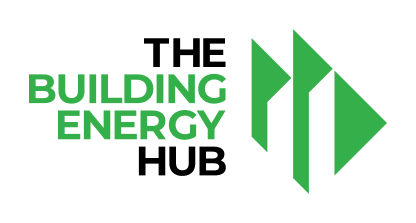Decarbonization Planning Guide
Develop Your Decarbonization Plan
Load Reduction Options
Lighten your building’s heating burden with simple upgrades.
Load reduction is the process of minimizing a building’s heating and hot water loads before you electrify your heating equipment. Load reduction is crucial for any building decarbonization project for several reasons:
- High building heating loads require large systems to keep the building comfortable in cold weather. This might result in inefficient performance outside of the coldest days. The required equipment might be so large that the building’s existing space and infrastructure might not support it.
- Load reduction allows downsizing the heating equipment. Typically, when comparing costs, electrification measures can be more than twice as expensive as combustion-based equipment. When viewed as a whole, an optimized slate of load reduction measures and heating system replacement often has both a lower capital cost and life-cycle cost than electrifying heating equipment on its own.
- Load reduction decreases peak electrical load impact. Often, in an electrified building, peak demand shifts from summer to winter because of peak heating needs. This can strain the grid, increase demand for electricity, and shift the impact of monthly utility charges from usage to demand.
When viewed independently, load reduction measures traditionally have had long payback periods and limited benefit from increased performance beyond code compliant levels. When electrification becomes the end goal, a holistic assessment is necessary to account for all saving benefits from smaller heat pump equipment size, reduced infrastructure needs, and decreased peak demand charges.
Conventional strategies vs. Advanced measures
Load reduction is viewed in two categories: conventional strategies and advanced measures.
Conventional strategies
Conventional strategies usually benefit a decarbonization plan, and include items with a lower upfront costs, such as:
- Window inserts
- Roof insulation
- Envelope air sealing
- Installation of hot water pipe insulation
- Installation of timers or other sensors on hot water recirculation loops
- Recalculating size requirements for HVAC and hot water systems.
Advanced measures
Advanced measures typically have higher upfront costs. These include but are not limited to:
- Window replacement
- Wall insulation
- Overcladding insulation
- Heat recovery systems for HVAC or hot water
Future proofing considerations
Successfully decarbonizing a building requires a forward-thinking approach. By making key decisions earlier than you might think you needed to, you can facilitate upgrades down the road and avoid stranding assets. This not only lowers the cost of decarbonization, but makes the building more resilient to extreme weather and other emergencies. Examples of future-proofing include:
- Depending on the size of the building, consider infiltration testing both before and after air sealing to support optimal HVAC system sizing. Significant improvements to a building’s insulation system can improve overall resilience and limit impacts of extreme weather conditions.
- If your goals include a new HVAC system or rooftop solar, consider conducting a structural inspection before upgrading roof insulation to see if the roof can support large HVAC equipment or solar panels. If the structure needs upgrades, complete them before or at the same time as the insulation to avoid removing new insulation later for structural upgrades.
- When upgrading a hot water system with a heat pump, implement load reduction measures beforehand. After installation, consider conducting a stress test on the lower water temperature to see if it meets the building’s heating load, and whether the hot water distribution system needs any upgrades.
Reducing loads can also be done through other active strategies often tied into the HVAC system. These are discussed in more detail under the Electrification of Systems section.
Key Load Reduction Questions
- What is the current state of my building envelope? Are windows, walls, or roof components in need of repair? Are there know leaks, damage, or repairs needed?
- When was my building built? Does it have modern insulation and air sealing?
- Should I conduct an air leakage test or thermal imaging to check for deficiencies?
- How will the sizing of my new heat pump HVAC system be impacted by load reduction?
- Can I reconfigure my HVAC system to recover lost heat through exhaust systems?
- What additional value propositions exist for refreshing the exterior of my building?
- How does the life cycle cost of completing electrification measures with and without load reduction benefits compare?


